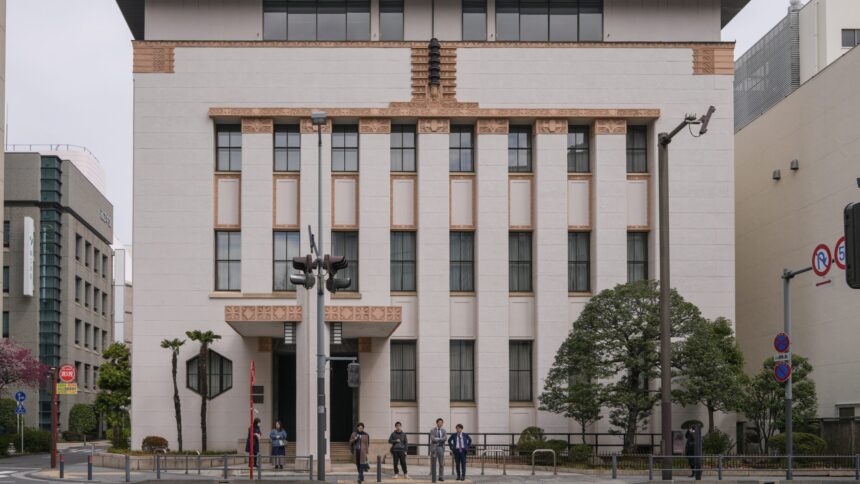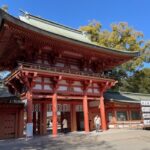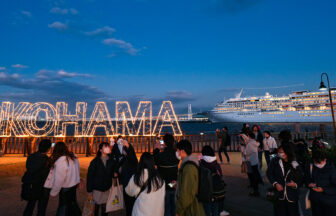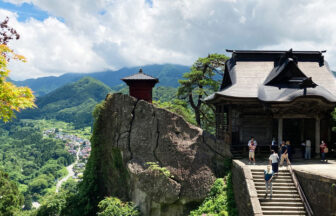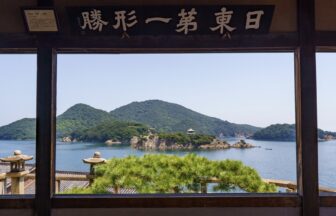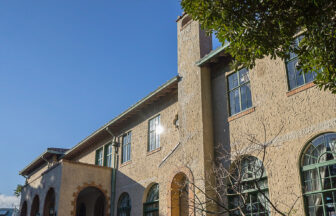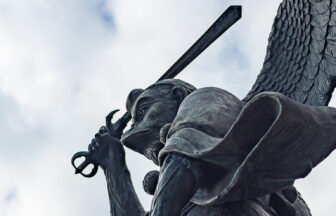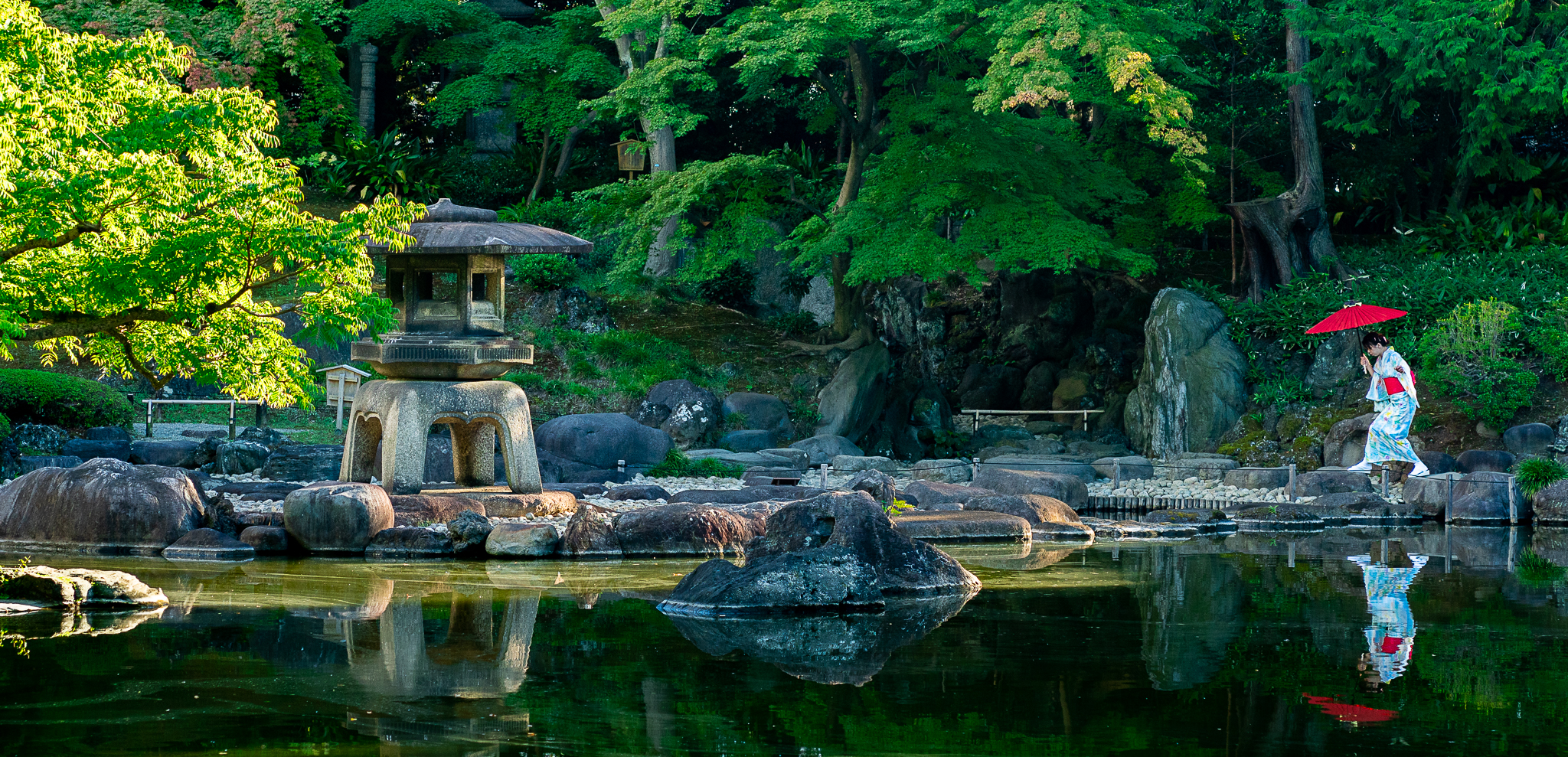I encountered a valuable book “A Journey Through Famous Architectures in Yokohama” (邦題:「横浜の名建築をめぐる旅」). The authors are Yuko Sugeno and Riku Onda and the publisher is X-Knowledge.
In this book, Yuko Sugeno, Ph. D in Engineering, and Riku Onda, a novelist, introduce 32 modern buildings in Yokohama. Both show their deep love for great architecture in Yokohama.
Many photos by Koji Honda are posted, too. I admire his great skill in showing splendid features of architecture. BTW, photos posted on this blog are all taken by me. I suspect that my photos show some similarity to those by Koji Honda because I was inspired by his great works. Please forgive me if this were the case.
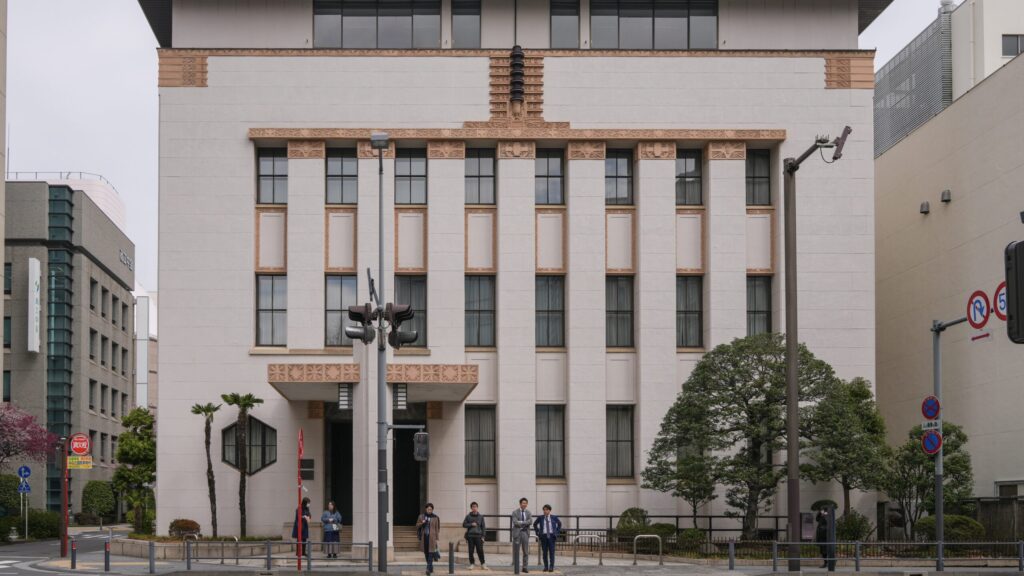
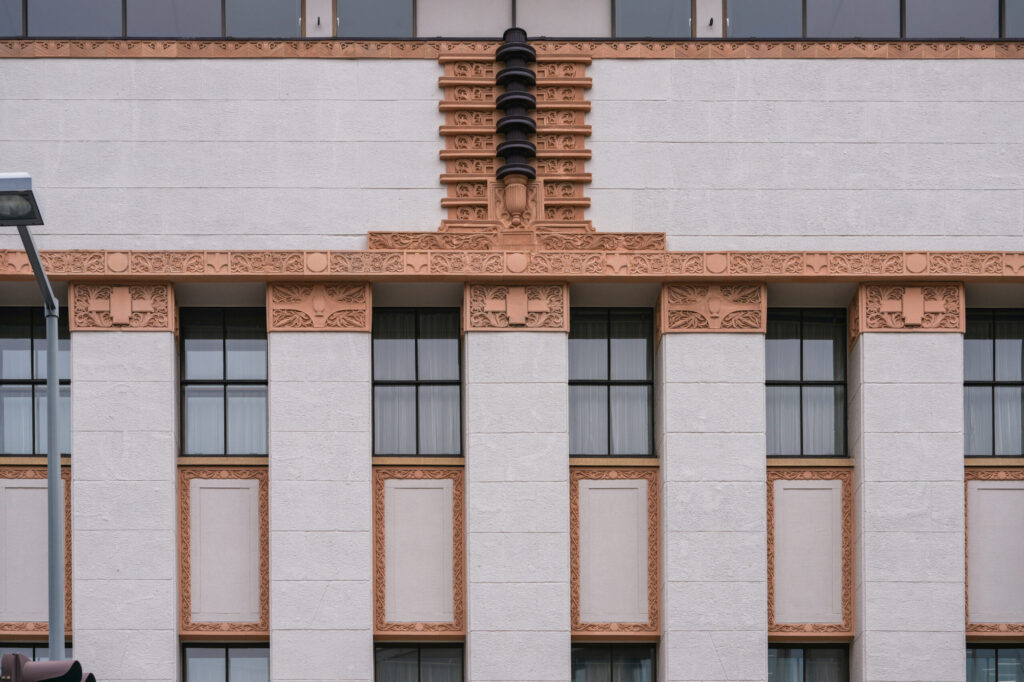
Having lived in Yokohama for decades, I thought I had decent knowledge of major buildings in the city. But, when I read the book, I found many places that I need to visit again. Among them, what caught my big attention was the Former Yokohama Bank Assembly Hall owned by the Yokohama Bankers Association. Near the hall, there are famous buildings such as the former Yokohama Bank Head Office Annex. I visited the area several times, but I didn’t remember the Former Yokohama Bank Assembly Hall. Why?
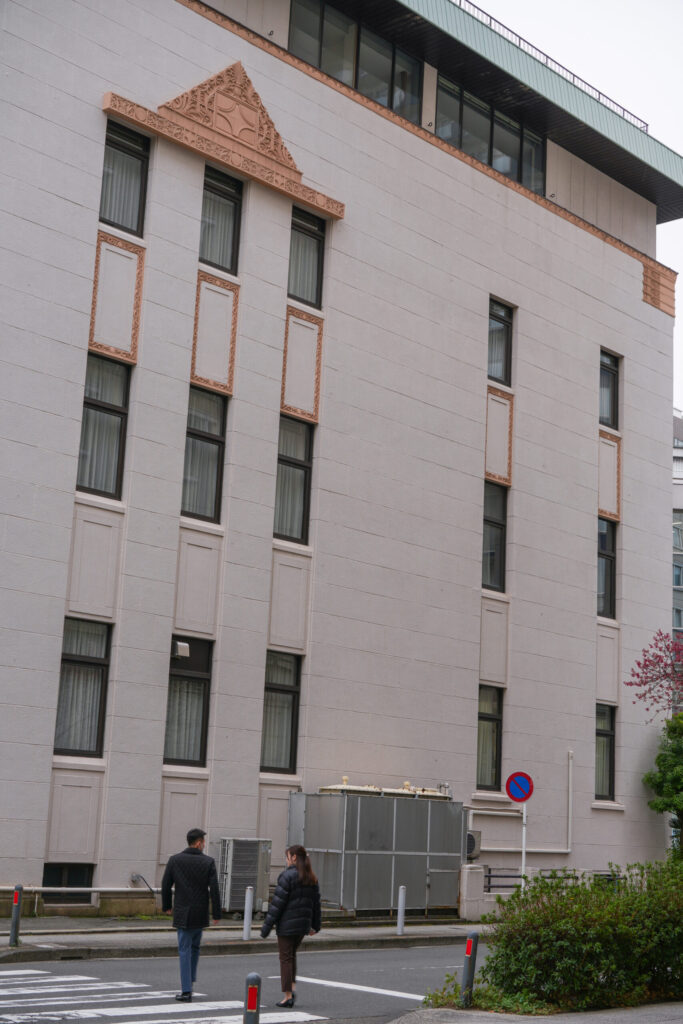
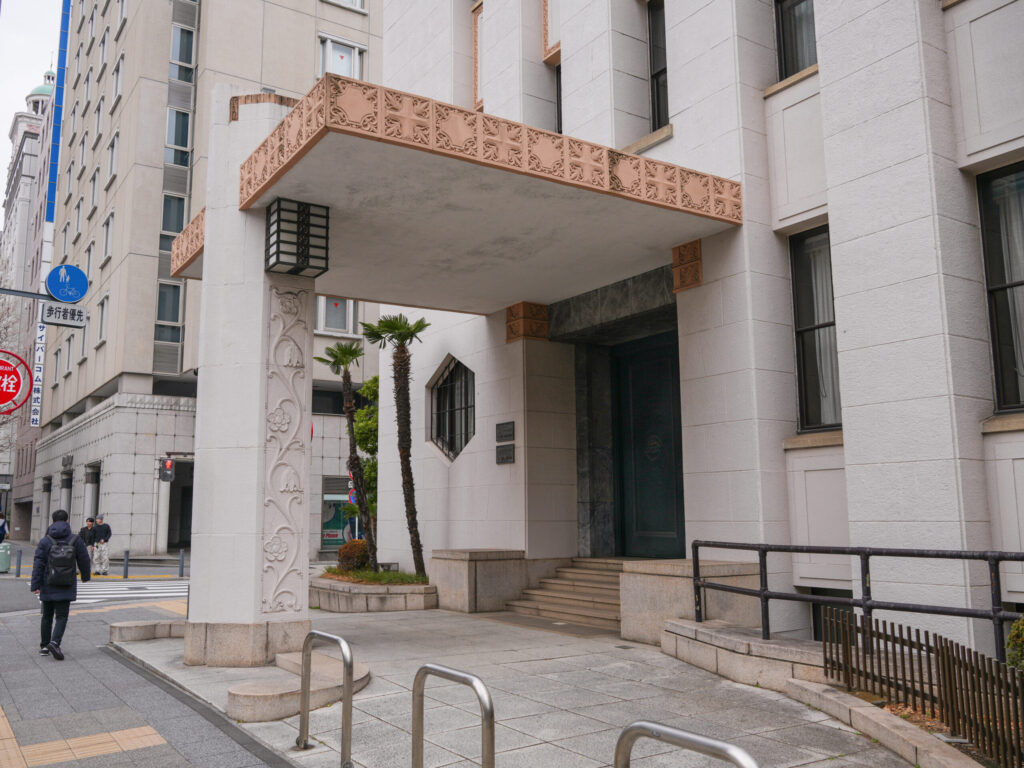
The architecture of the former bank head office was built in the style of Greek classical architecture, imposing much of solemnity and grandness. On the other hand, the Former Yokohama Bank Assembly Hall is relatively small, standing modestly with its elegant design. To be honest, I don’t like Greek classical style buildings because they have too much presence. I wonder why there is such a difference between the two bank-related buildings?
Inspired by the book, I recently visited the Former Yokohama Bank Assembly Hall. It is located at the intersection of Honcho-dori Street and Kannai-oh-dori Street, which leads from JR Kannai Station.
Just in front of the hall, there is an information board which conveys the following:
“Yokohama Bankers’ Association. Former Yokohama Bank Assembly Hall. The skillfully designed façade, which seems to reflect the influences of the art deco style and F.L. Wright, and excellent decorative terracotta details make the design of this building very chic”.
What does this mean????
Can I tell the difference between Art Deco and Art Nouveau? Am I correct in saying that Wright is the architect of the Imperial Hotel in Tokyo? What is a façade? What is a terracotta? So, I did a little research.
Building of the Bank of Yokohama?
“Former Yokohama Bank Assembly Hall” is not a building of a regional bank “Bank of Yokohama”. It means “a place where people working at banks in Yokohama gather”. There were cafeterias, a billiard room, a Go and Shogi playing room, and a barbershop. After WW II, it was requisitioned by GHQ, being used as an officers’ club until 1952. Initially, it had three floors, but in 1965 a fourth floor was added to accommodate a clearing house. It seems that the addition was made without destroying the basic structure of the building. But the exterior design of the fourth floor does not look refined to me. Please allow me to show my little disappointment.
Art Deco
Art Deco is a style popular in the early 20th century, characterized by linear designs, geometric and symmetric patterns. Art Nouveau is a decorative technique derived from organic motifs such as plants, using many curves. The exterior of the Former Yokohama Bank Assembly Hall is symmetrical with Art Deco style. The main entrance is placed, however, to the left instead of the center. A hexagonal window is added, too. Both create movements in design. The west wall has triangular decoration (pediment) on the upper left side; the symmetry is broken in such nice a way.
F.L. Wright
Frank Lloyd Wright is an American architect, famous for designing the second generation of the main building of the Imperial Hotel in Tokyo. Instead of using red bricks, which were the mainstream in Western architecture, Wright introduced ”Sudare” scratch bricks, terracotta (more on this later), and Japanese “Oya-ishi” stone. These created sort of fusion of western and Japanese tastes for the Imperial Hotel. The information board says that the building of the hall was influenced by Wright. It is true that many terracotta decorations are used. In addition, a hexagonal window on the left side of the main entrance may also be a style influenced by Wright. He designed a chair with a hexagonal backrest called the “Peacock Chair” for the new hotel. With “Peacock Chair” in mind, Yoshikuni Okuma, the designer of the hall, must have placed the hexagonal window.
Façade
“Façade” is a French word for the exterior in the front of a building. I didn’t have much knowledge about architectural terminology, so this was the first time I knew what it meant.
Terracotta
This is an Italian word which I have not known, either. It refers to an exterior decoration made of fired and unglazed clay, being characterized by its reddish-brown color and rustic appearance. The terracotta which adorns the walls of the Hall is designed with the curves of vases and plants within the framework of a geometric pattern. The whole building is built with Art Deco style, but the terracotta which has a lot of curves gives the whole building a sense of elegance.
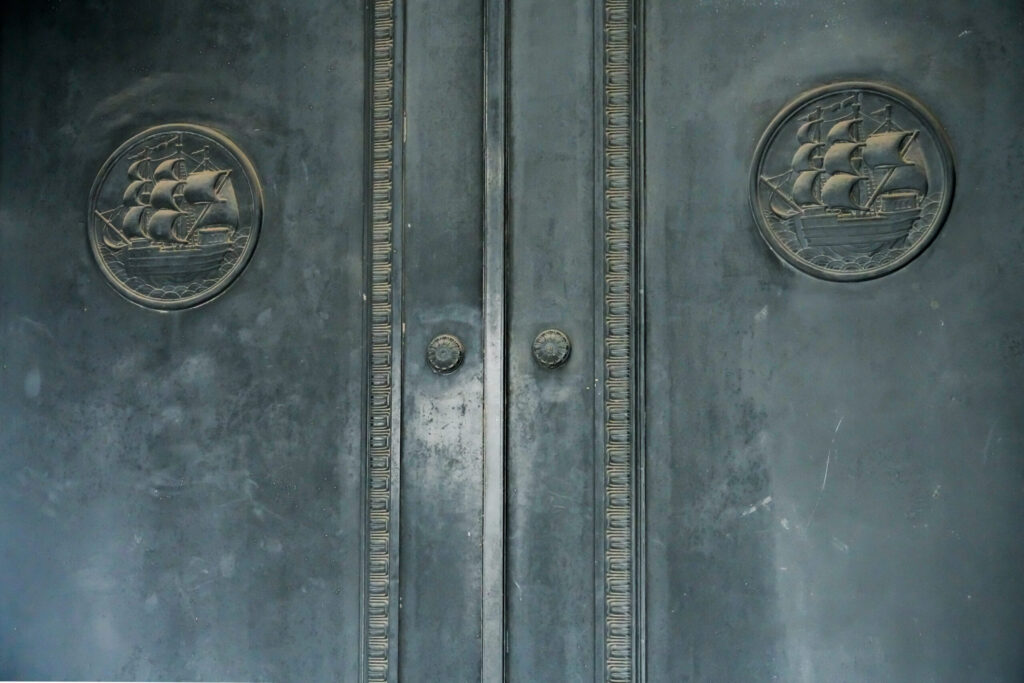
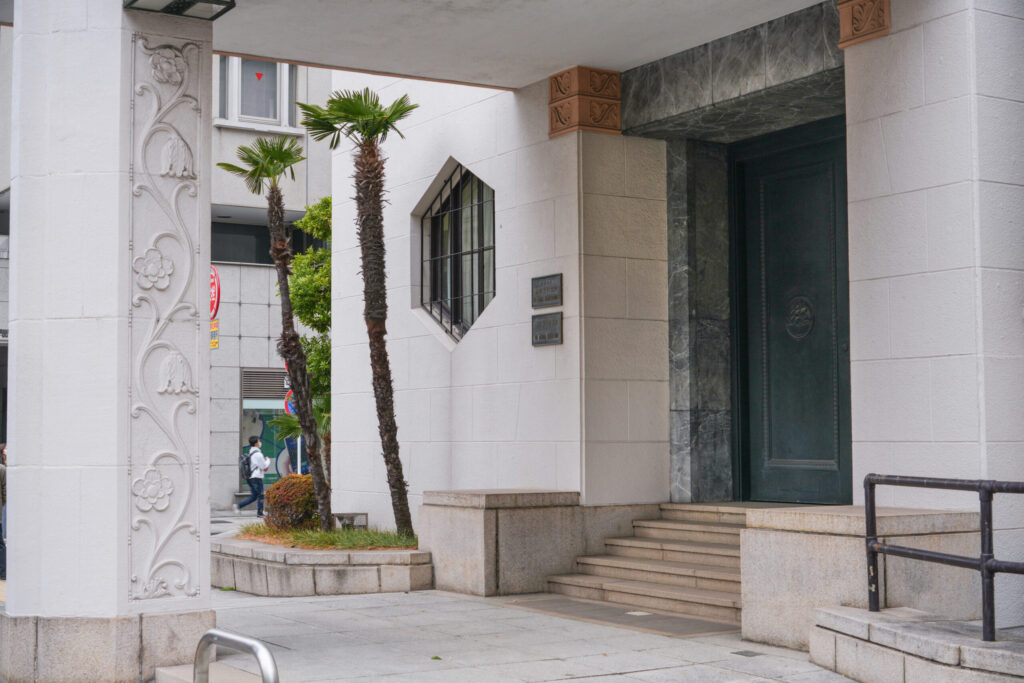
Sailing Ship
The decoration of the metal door at the main entrance is a sailing ship. It’s a symbol of the port city of Yokohama. This kind of play is what I like very much!
This blog is about the architecture of the Former Yokohama Bank Assembly Hall owned by the Yokohama Bankers Association. I’ve bought the book “A Journey Through Famous Architecture in Yokohama”, which would help me write another blog about beautiful architecture in Yokohama.
Jin Shibata
If you have any feedback, please fill in the following. Your message will be sent to the author of this article. Thank you so much for your visit to the site!

